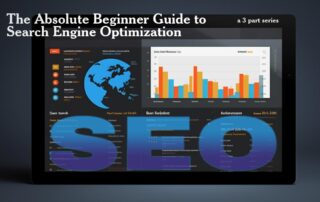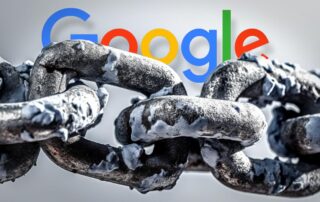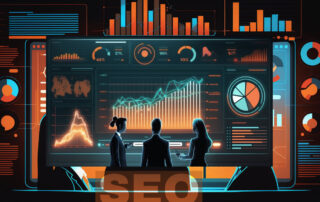
Understanding SEO and SEM
With millions of websites competing for attention, how can businesses stand out? Two essential strategies come into play: SEO (Search Engine Optimization) and SEM (Search Engine Marketing). While they share a common goal—to improve visibility in search results—they differ in approach and application. In this article, we’ll explore what SEO and SEM are, how they work, and why they are critical for online businesses.
What is SEO?
SEO (Search Engine Optimization) is the practice of optimizing your website to rank higher on search engine results pages (SERPs) organically. The primary goal of SEO is to increase the quantity and quality of website traffic without the need for paid advertisements. SEO involves several tactics, including:
- On-Page Optimization: This includes using relevant keywords, optimizing title tags, meta descriptions, and improving content structure.
- Technical SEO: Ensuring that your website is mobile-friendly, fast-loading, and crawlable by search engines.
- Off-Page SEO: Building high-quality backlinks from reputable sites to improve your website’s authority and trustworthiness.
Best Uses for SEO
- Long-Term Visibility: SEO is a long-term strategy. It’s perfect for businesses looking to create sustainable, organic growth over time.
- Authority Building: SEO helps establish your brand as an authority in your niche by providing valuable content and earning backlinks.
- Cost-Effective: While it may take time to see results, SEO is cost-effective compared to paid advertising because it brings in traffic organically.
- Improving User Experience: SEO practices, such as improving website speed and usability, enhance the user experience, which can lead to better engagement and conversions.
Why SEO is Important for Online Businesses
SEO is essential for online businesses because search engines drive the majority of web traffic. If your website ranks high for relevant keywords, you’re more likely to attract potential customers. Organic search results are also perceived as more trustworthy than paid ads, giving businesses an opportunity to build credibility and trust with their audience. Furthermore, with more people using mobile devices, optimizing for local search through SEO can drive targeted traffic, especially for businesses with a physical presence.
What is SEM?
SEM (Search Engine Marketing) refers to paid strategies used to increase visibility on search engines. The most common form of SEM is PPC (Pay-Per-Click) advertising, such as Google Ads, where businesses bid on keywords and pay for each click their ad receives. SEM provides immediate visibility and can be a powerful tool for driving traffic quickly.
Best Uses for SEM
- Quick Results: Unlike SEO, which takes time to build, SEM can produce almost instant visibility. It’s ideal for businesses looking to promote time-sensitive offers, new products, or seasonal campaigns.
- Targeted Ads: With SEM, you can target specific demographics, locations, and even time slots, ensuring your ads are seen by the right audience at the right time.
- Control Over Budget: SEM allows you to control your budget, bidding on keywords that fit within your advertising spend while paying only for the clicks you receive.
- Data-Driven: SEM campaigns provide detailed analytics, allowing businesses to track the performance of their ads in real time. You can make adjustments to optimize your campaigns based on this data.
Why SEM is Important for Online Businesses
SEM is vital for businesses that need to drive traffic quickly, especially in highly competitive industries where ranking organically can take time. Paid search ads give businesses immediate access to the top of the search results, putting their offerings in front of potential customers who are actively searching for products or services. SEM is also an excellent strategy for remarketing, where you can target users who have previously visited your site, encouraging them to return and convert.
SEO vs. SEM: When to Use
The choice between SEO and SEM depends on your business goals, timeline, and budget. For long-term growth and sustainable traffic, SEO is your best bet. It takes time, but the results last longer and don’t require ongoing payments once you rank. On the other hand, if you need fast results or are in a highly competitive space, SEM is a smart choice. By combining both strategies, businesses can benefit from both immediate traffic and long-term growth.
Both SEO and SEM are essential tools in the digital marketing toolbox. SEO provides a cost-effective, long-term solution to drive organic traffic, while SEM offers a more immediate way to attract visitors and generate leads. For online businesses, balancing both strategies can lead to optimal visibility, increased traffic, and better ROI. Whether you are starting with SEO or launching a paid SEM campaign, the key is to continuously monitor, optimize, and adapt your strategy to stay ahead of the competition.
10 most important SEO practices we need to do today.
![]()




























